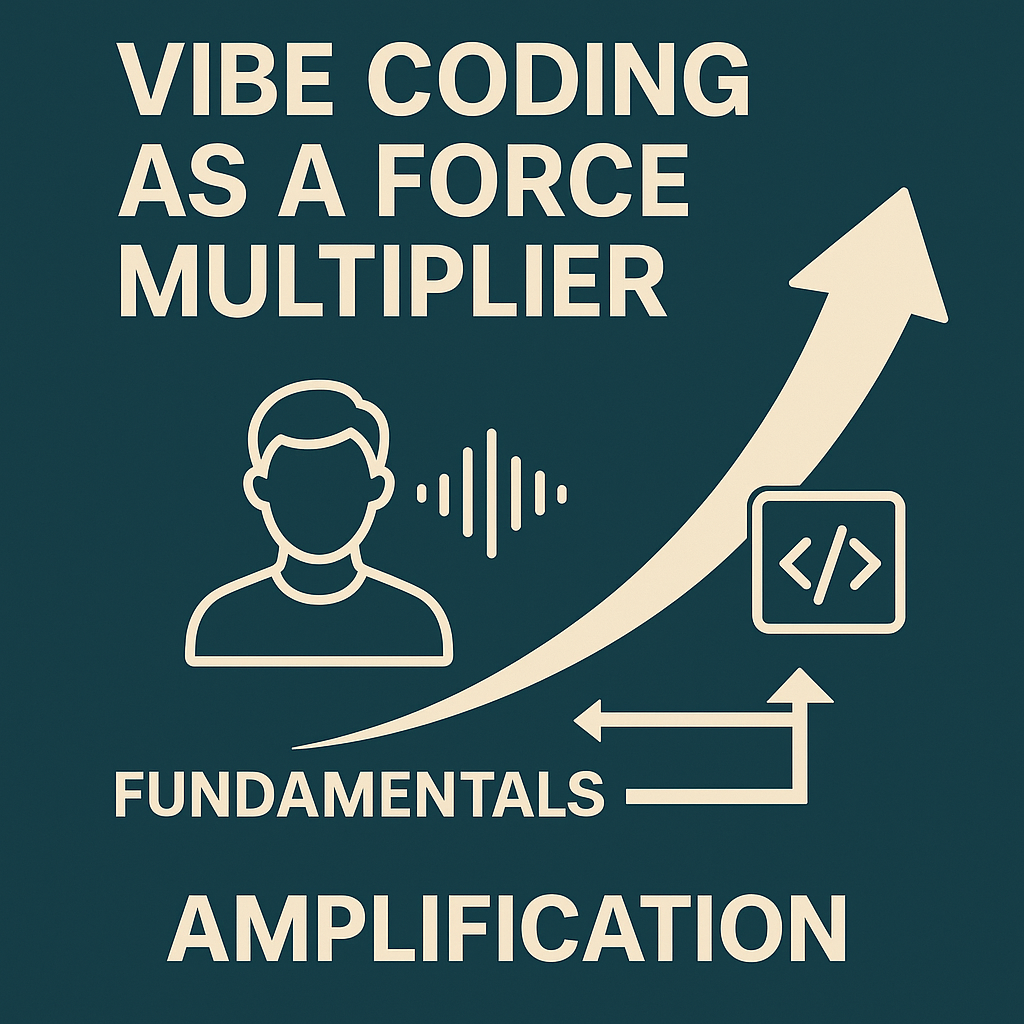Vibe Coding Is Real—The 100 × Developer Has Arrived
Remember my “100 × dev” prediction? Vibe coding—pairing deep fundamentals with AI copilots like Amazon Q and GitHub Copilot—is already here. Boilerplate melts, architecture shines, and skilled devs become force multipliers.

Back in late 2023 I wrote “The 10× Developer Is Dead; Long Live the 100× Developer!” and staked the claim that generative‑AI pair programmers would blow past the old lore of lone coding ninjas. Two years on, that bet has paid off. The industry has quietly coined a name for the phenomenon—vibe coding— and it’s already reshaping day‑to‑day life for engineers who build in the cloud.
From keystrokes to conversation Vibe coding feels less like pounding out syntax and more like riffing with a hyper‑attentive colleague. You describe intent—“stand up an EventBridge‑driven image‑resize pipeline,” say—and the agent drafts the CDK stack, writes the Lambda, hardens IAM, even runs unit tests. You stay in flow, steering by suggestion and critique rather than fighting boilerplate. Amazon Q Developer’s new agentic mode captures this shift perfectly: it can read and write local files, execute shell commands, and keep an interactive chat going inside your IDE or CLI, so the whole scaffold‑debug‑refactor loop happens in one conversational thread.
GitHub Copilot tells the same story on the cross‑platform front. Field studies with enterprise teams show tasks finishing up to 55 percent faster and developers reporting higher confidence and “joy” when repetitive glue work evaporates. The pattern is clear: when an AI partner shoulders the drudge work, humans can focus on domain boundaries, failure modes, and the trade‑offs that still demand judgment.

Fundamentals still rule. Here’s the twist that matters for every ambitious engineer: vibe coding is an amplifier, not a replacement. The agent is only as smart as the questions you ask and the context you provide. If you don’t understand why eventual consistency matters, the AI can happily scaffold you straight into data‑loss hell. But pair deep fundamentals with an agent that never gets tired, and your reach explodes. Experienced devs report that the better they can articulate intent—think clean architecture diagrams, crisp acceptance criteria, tight feedback loops—the more the AI nails it on the first pass.
In other words, the ceiling on leverage just moved, but the floor is still poured concrete. Master your language runtimes, networking quirks, and cloud primitives; then let the machine handle the tedium while you play system architect, product strategist, and resident chaos‑monkey all at once.
A small serverless team recently rebuilt a legacy image‑processing stack in a single afternoon. The lead engineer kept GitHub Copilot humming for test stubs while Amazon Q iteratively refactored the Lambda into a Step Functions‑backed pipeline, wiring new S3 buckets and CloudFront distributions without ever leaving the terminal. Total human keystrokes: around 300. Total value delivered: a compliance‑ready, IaC‑driven service that would have taken a sprint the old way.
Stories like that are piling up. They aren’t demos; they’re Tuesday.
What now?
If your development culture still measures output in lines of code, you’re optimising the wrong variable. Start treating prompt‑craft, architectural storytelling, and rapid feedback as first‑class engineering skills. Spin up a vibe‑coding spike, review what the agent generated, and ask harder questions next time. The teams that learn this conversational dance earliest will ship faster, recover faster, and invent faster.
The 100 × developer isn’t a unicorn lurking in some stealth startup. They’re any engineer who pairs solid fundamentals with an AI that turns intent into reality at conversational speed. Vibe coding made that future arrive early—now it’s just a question of who leans in and who keeps hand‑stitching YAML while the rest of us jam.